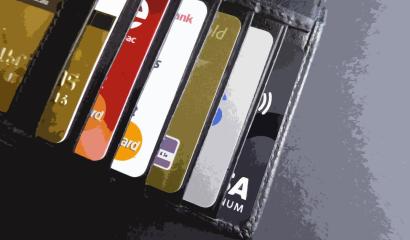Ali Abbas
What is LIBOR?
The London Interbank Offered Rate (LIBOR) is the average interest rate at which global banks offer short term loans to each other.
LIBOR is a benchmark rate and is used as a reference to calculate interest rates for a range of interbank products such as futures and stock options and for consumer financial products such as mortgages, credit cards, and car loans. In 2019, the rate was linked to around $340 million of interest-related products, including $1.2 trillion in US mortgages alone.
While LIBOR has become an important metric for market activity, it has received a significant amount of criticism following revelations in 2012 that certain banking institutions had manipulated the rate. In response to the controversy, new systems to determine interbank exchange rates will be introduced as LIBOR is phased out in the coming years.
Why was LIBOR introduced?
LIBOR was developed as a reference rate for Eurodollar transactions in the 1970s. However, when the global market for interest rate-based instruments began to grow in the 1980s, leading international banking institutions in London started to use it as a benchmark by which to set their interest rates. As its influence grew it began to be used widely as a benchmark rate by the global financial community.
In 1986, the British Bankers’ Association (BBA) formalised the process of collecting the interest rate data that informs LIBOR and introduced a governance process – the system was known as BBA LIBOR. In 2014, the Intercontinental Exchange (ICE) took over from the BBA and began publishing the rate as ICE LIBOR. The current ICE LIBOR rate draws from up to 16 contributor banks and is published for 5 currencies: the US Dollar, Pound Sterling, the Euro, the Swiss Franc, and the Japanese Yen.
How does it work?
LIBOR is published on a daily basis by an administrative panel that is maintained by the ICE Benchmark committee, which is made up of 11 to 16 contributor banks. The calculation process involves the following steps:
- The panel submits the rates at which they would lend to other financial institutions.
- The submitted rates are listed in order of highest to lowest.
- 25% of the highest and lowest listed rates are removed from the list.
- LIBOR is calculated as an average of the remaining rates, rounded to 5 decimals.
- The process is repeated for each of the 5 LIBOR currencies.
LIBOR is published at around 11.00 UK time each day and includes lending rates for 7 periods of maturity – from a single day to 12 months. This means that there are 35 different rates of LIBOR: one for each currency across the different maturity rates.
What is it used for?
While LIBOR is functionally only a referential benchmark, in practice it is used for a huge variety of debt instruments. Products that use the rate as a benchmark include:
- Interbank products such as forward rate agreements, interest rate swaps, currency swaps, futures, and options
- Commercial products such as variable rate mortgages, loans, syndicated loans, student loans, and credit cards
- Government loans and corporate loans
- Collateralised debt obligations
An example of a specific application the rate might see a bank set a floating interest rate on a long-term loan, based on the 6-month rate. The loan interest rate would be adjusted every 6 months based on the new rate, which may entail an increase or a decrease.
What was the LIBOR scandal?
In 2012, reports emerged that some of the banks responsible for setting LIBOR had been colluding to manipulate the rate as far back as 2003. The reports revealed that traders had been submitting artificially high or low rates in order to benefit their institution’s specific trading goals.
The scandal gained more notoriety when it emerged that LIBOR banks had been colluding to manipulate the rate during the 2008 global financial crisis and, in doing so, had exacerbated its financial damage. A bank may, for example, have offered home buyers a fixed rate mortgage predicated on an artificially high rate – the additional expense that the buyers subsequently paid to the bank would effectively have been fraudulently obtained.
The scandal eroded public trust in the marketplace and resulted in a number of legal actions. Many banks received fines for their part in the rate manipulation, including Barclays Bank which was fined over $500 million and UBS which was fined a record $1.5 billion. Collective global fines for the LIBOR scandal exceeded $9 billion.
In the wake of the scandal, the UK’s Financial Conduct Authority(FCA) withdrew responsibility for publishing the rate from the BBA (which was subsequently integrated into the banking trade association UK Finance). When ICE took over responsibility for LIBOR in 2014, it introduced new submission and calculation procedures in an attempt to restore public and industry confidence.
What will replace LIBOR?
The rate manipulation scandal and ongoing financial reforms have led UK and other global regulators to seek a replacement for LIBOR. Accordingly, it will be phased out between 2021 and 2023 and replaced with new benchmark rate systems in jurisdictions across the world. In the US and the UK, LIBOR will be replaced by the secured overnight financing rate (SOFR): where LIBOR is based essentially on estimated interest rates, SOFR is based on transactions observed on the US Treasury market, and references the cost of borrowing money on an overnight basis.
Replacements will vary by jurisdiction, banks in Japan, for example, will use the Tokyo Overnight Average Rate (TONAR), while European banks will use the Euro Overnight Index Average (EONIA) or the Euro Short-Term Rate (€STR).







